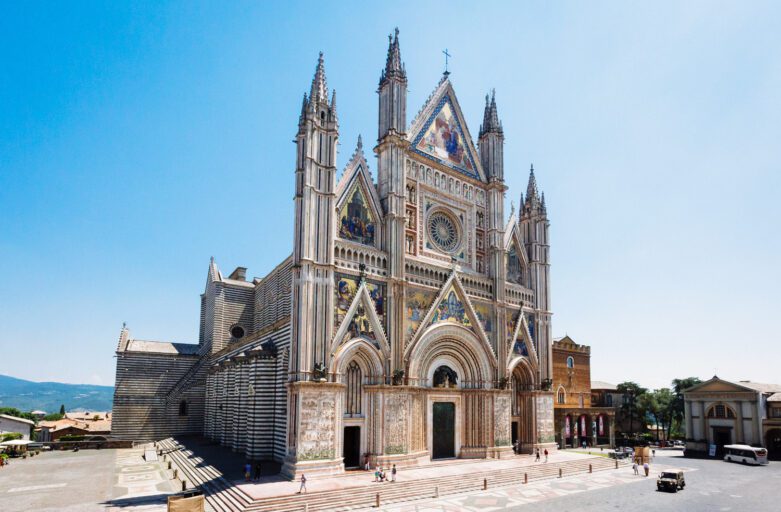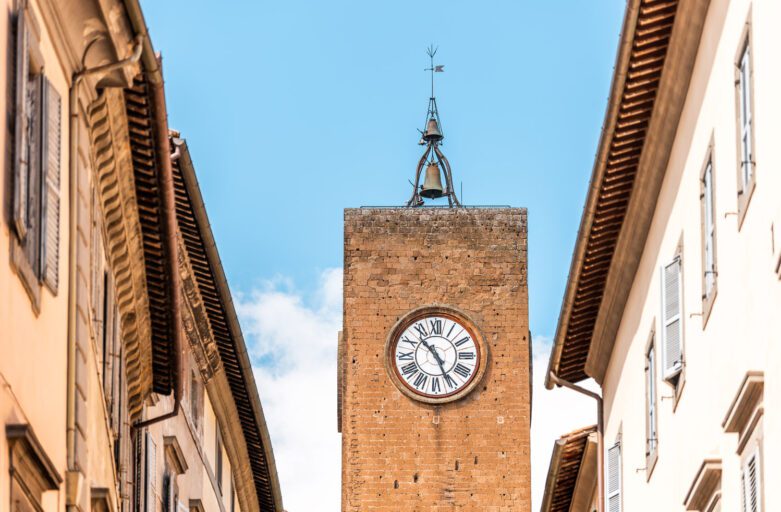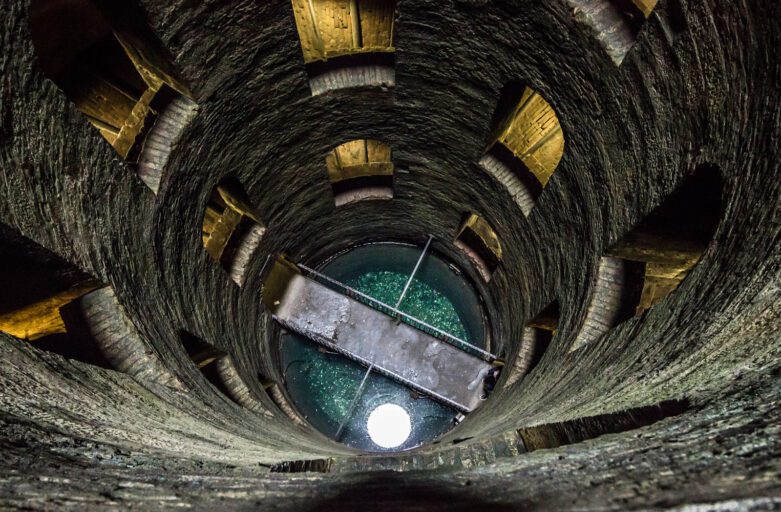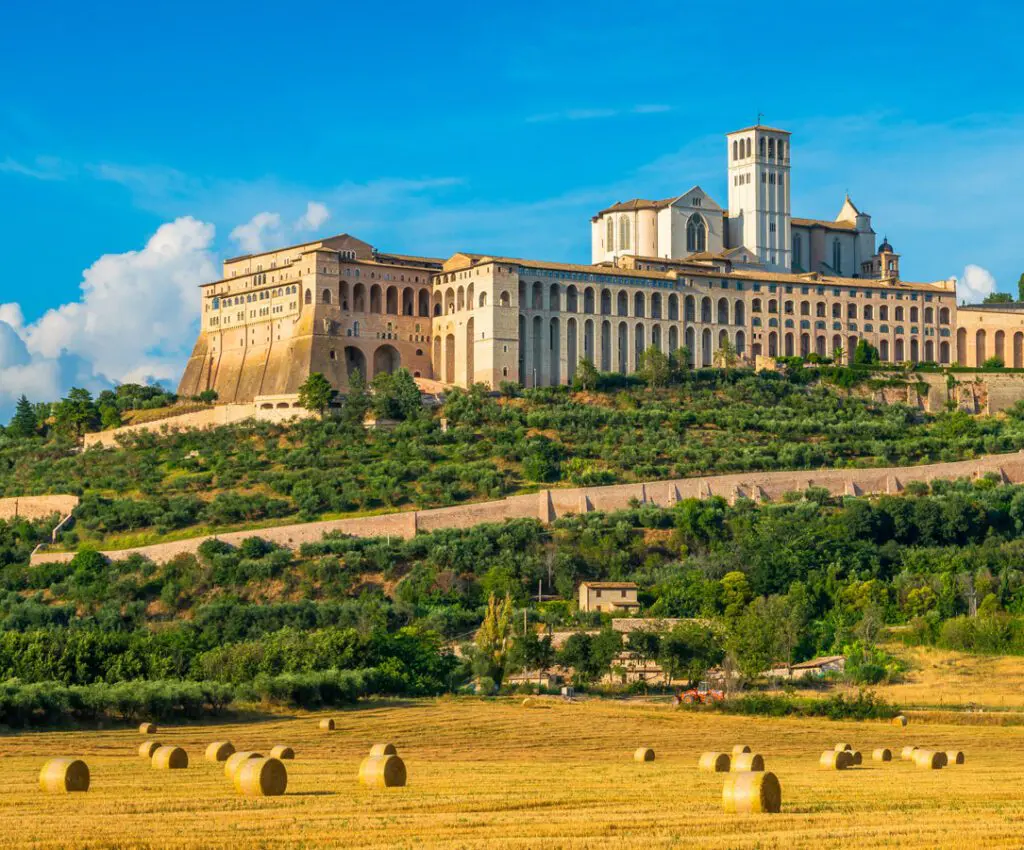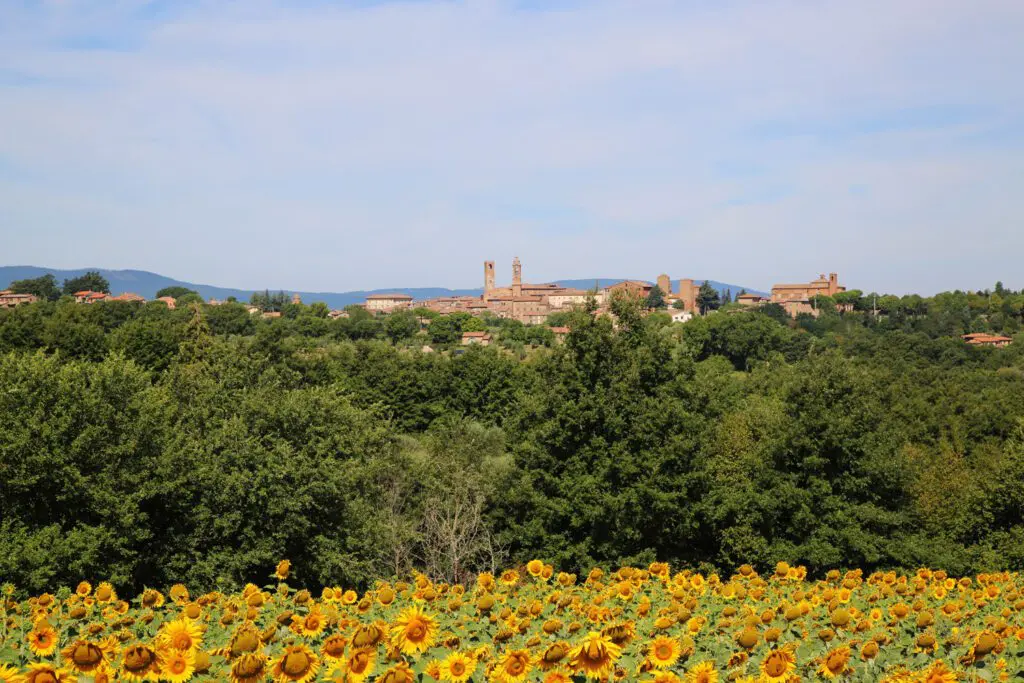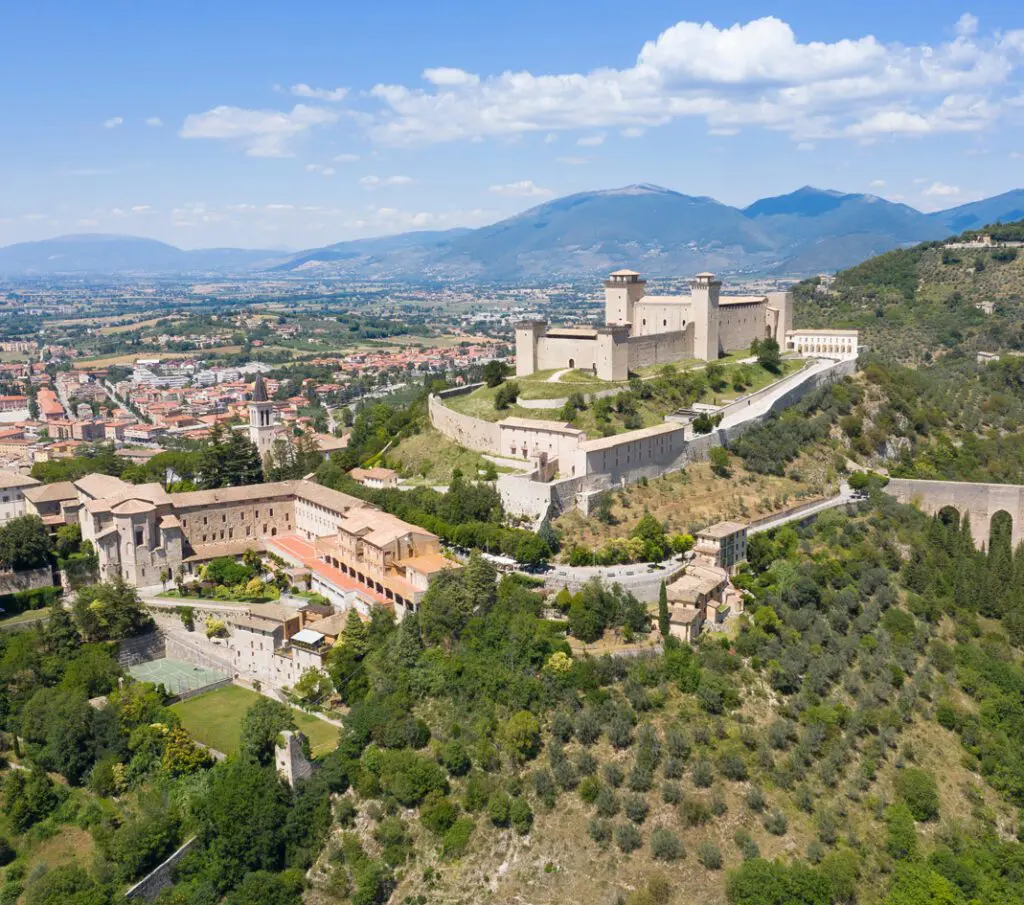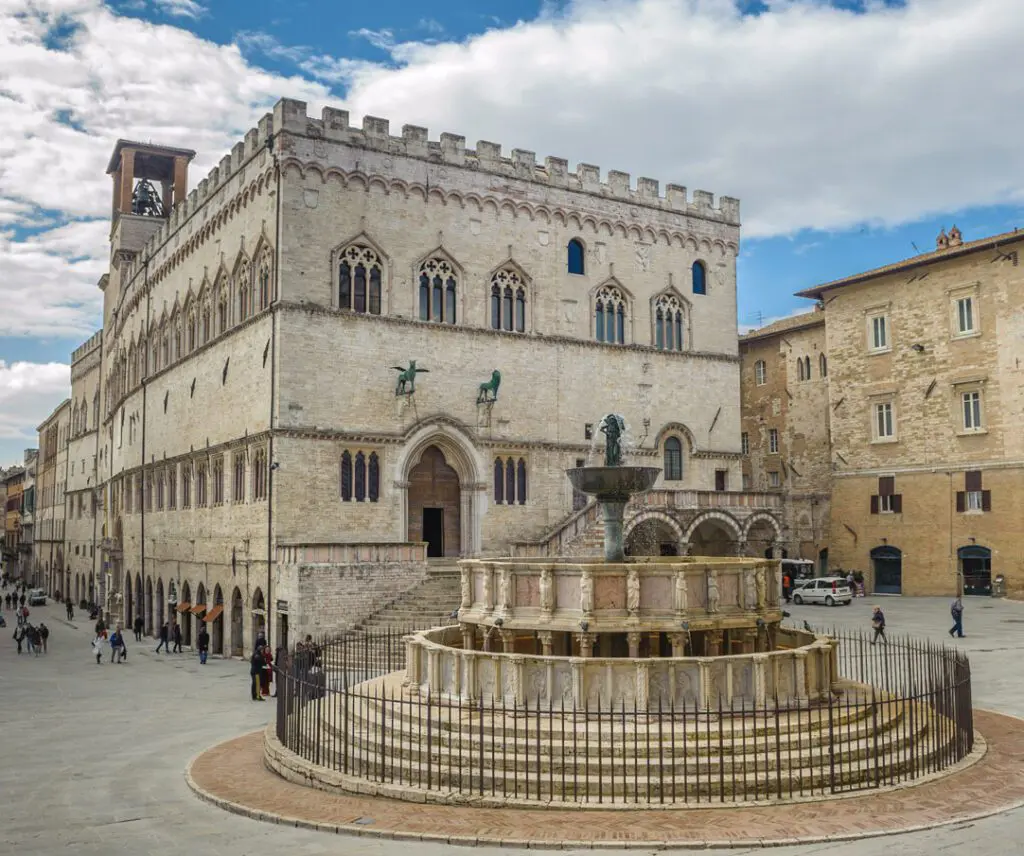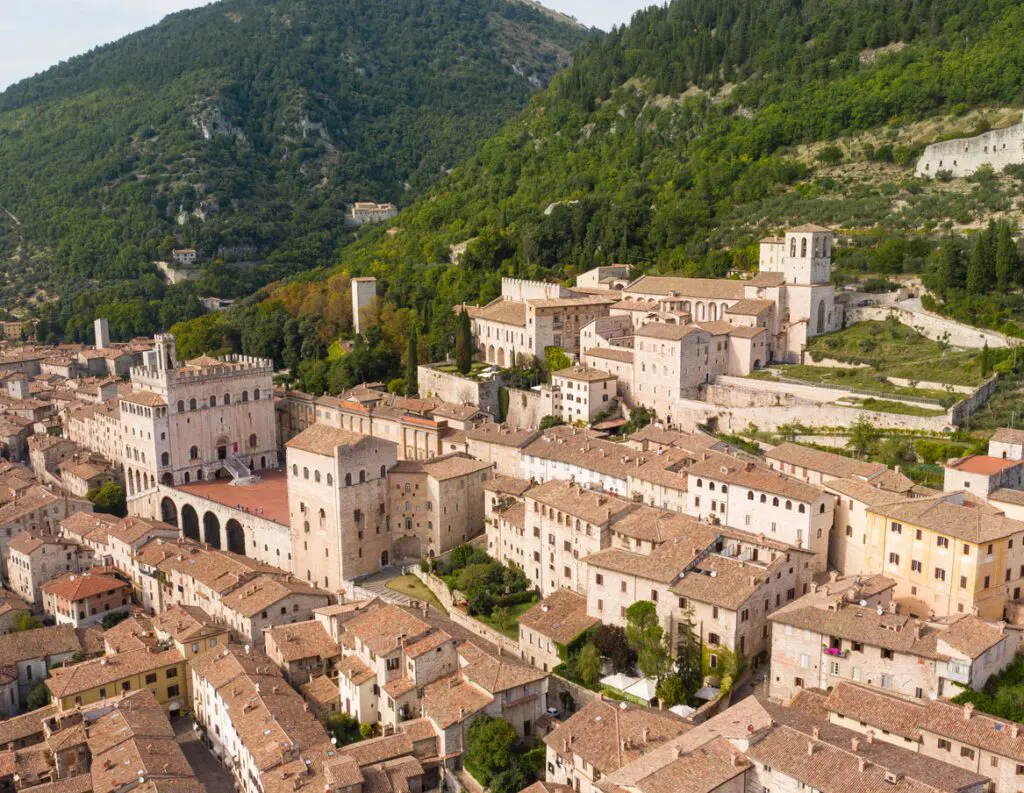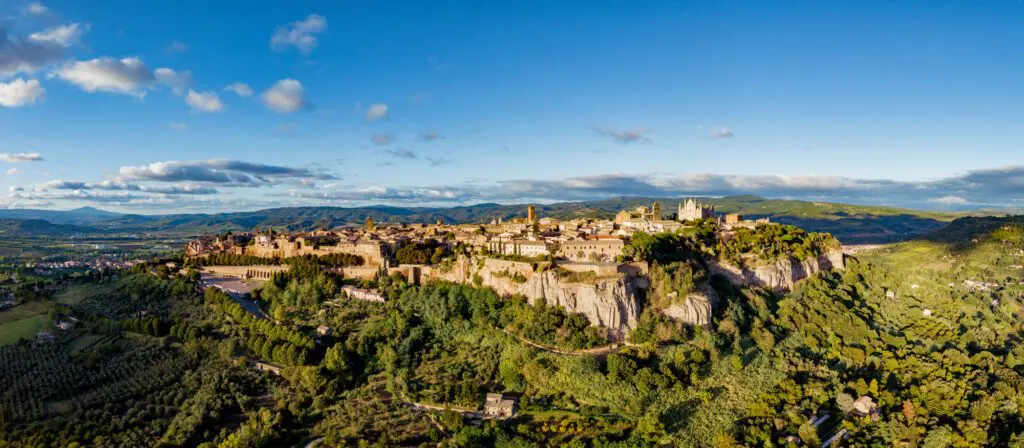The Hollow below the Town
Orvieto lies on top of a huge rock of volcanic origin, made of tuff and pozzolana. Visitors cannot but be charmed by this plateau, called la Rupe (the Cliff), that rises and dominates the valley all around, with its woods and vines. Man did not only colonize this rocky habitat, and add all sorts of buildings, up to the cathedral and towers, but – in all epochs – also dig underground hollows. Tuff has been housing a town below the town for centuries. So, Orvieto can be also visited in the depths of its own ground, and can boast unique underground areas. Some 1,200 artificial underground hollows have been counted; they were dug from the Etruscan Era to the Renaissance, and still later on. Under the town streets, see tunnels and rooms of all kinds: culverts, wells, silos, columbaria (dovecotes), furnaces, Medieval dumps. So, a curious symbiosis can be sensed between the Orvieto people and the rock – human engineering talent, the needs of everyday life, and Nature here mix by making an alliance that still nowadays surprises us.
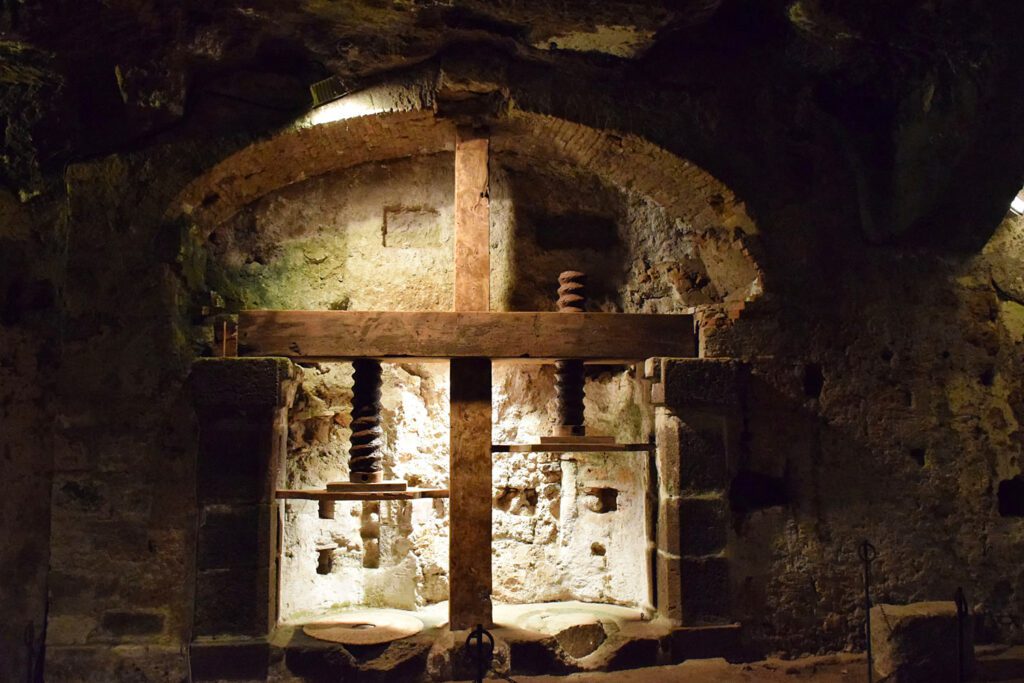
The Same as Above
An Underground Olive-press
On the southern edge of the Orvieto Cliff, not far from Piazza del Duomo (Cathedral Square), you will find the entrance to an underground complex that in the 14th century was called the “Mill of Saint Clare,” and currently Orvieto Underground. The first area to be seen is actually a mill, or more exactly, an olive-press. It was surely used in the 17th century, but, according to documents available, it had been built in the Late Middle Ages. But, why digging an olive-press in the rock? Whatever was done underground, aimed at promoting a better lifestyle on the surface. Here, the oil for the whole town was produced. We can still see the tools they employed, for example the press (recently reconstructed “as was”) and the millstones for olives – those big, heavy basalt wheels. The visit follows in the adjacent areas, more and more under street level.
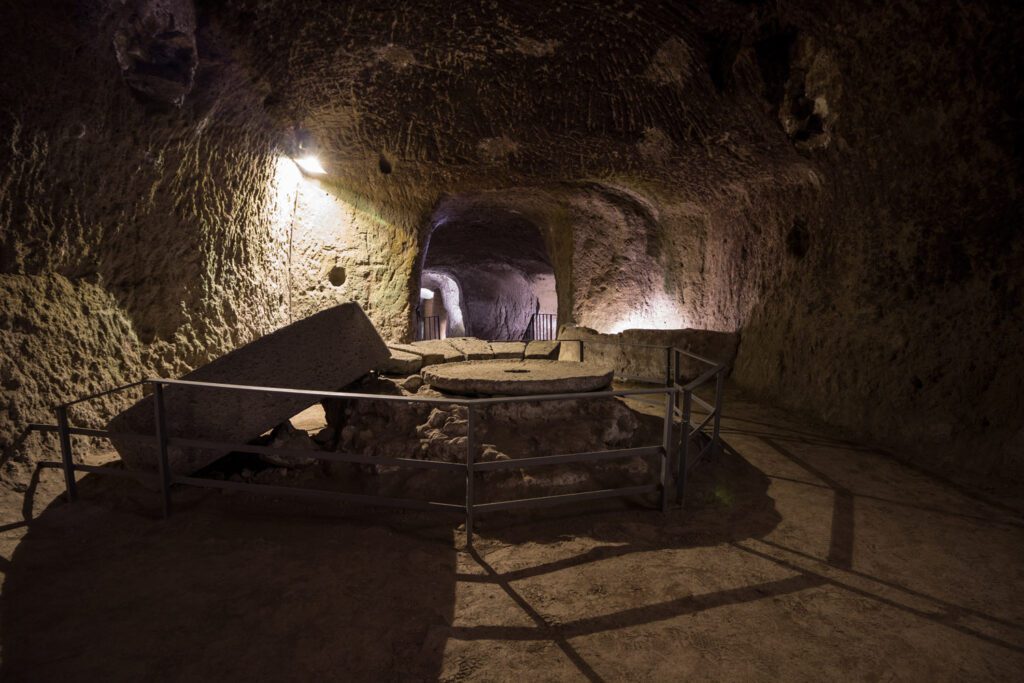
Pozzolana Quarry, Etruscan Wells, Dovecot
Another place much useful to town life was the quarry, where – from the Middle Ages onward – they mined a material called pozzolana (the name comes from Pozzuoli, near Naples). This material will be employed in the making of the surface buildings. By using local stone, they saved time and money.
We can also see some wells by means of which the Etruscans drew water from the aquifer that flows under the tuff rock on which the town rises.
The complex develops on different floors, creating layers above one another; each level was dug by the ancient inhabitants, each time grafting the new works onto preceding history and past functions. One example is the dovecot on the lower level: a room with many holes in the walls, like small windows, used to breed pigeons that would provide proteins for the common people's meals
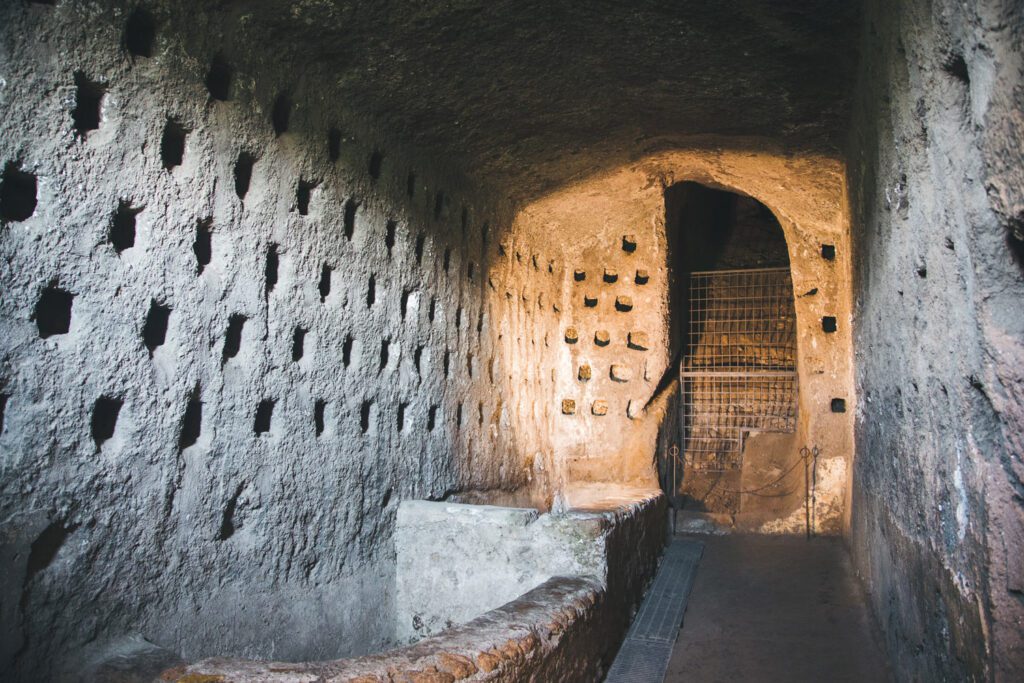
More Tunnels to Explore
Because of the great number of its artificial hollows, Orvieto offers still other underground places, currently under private management. For example, the Quarry Well (Pozzo della Cava, address: Via della Cava, N. 28) and Adriano's Maze (Labirinto di Adriano, in Via della Pace, N. 26). They both lie in areas geographically opposite to Orvieto Underground, but the distance between any two of these three sites can be covered in ten minutes on foot.
Quarry Well / Pozzo della Cava
The Quarry Well is a cylindrical well, 36 meters (110 feet) deep. At its bottom, it is possible to see its water spring. On the walls the so-called pedarole appear, that is, grooves dug in the rock so as to insert one's hands and feet to go up and down.
Among the many sites you can find by following the tunnels, of major significance are the rooms once used as furnaces for ceramics in a Medieval workshop, that kept this function from the 13th century to the 16th century. So, still during the Renaissance the hollows in this area were used to bake ceramics; scholars also found a muffola, a specific kind of furnace for the third baking. Baking phases are in fact generally three: the first one, called biscottatura, provides the basic physical support; the second fixes the enamels; the third baking is used for final decorations. Not by chance, Orvieto has pottery among its typical products. In the Christmas period, definitely fascinating is the Nativity scene set in this space, called Presepe nel Pozzo.
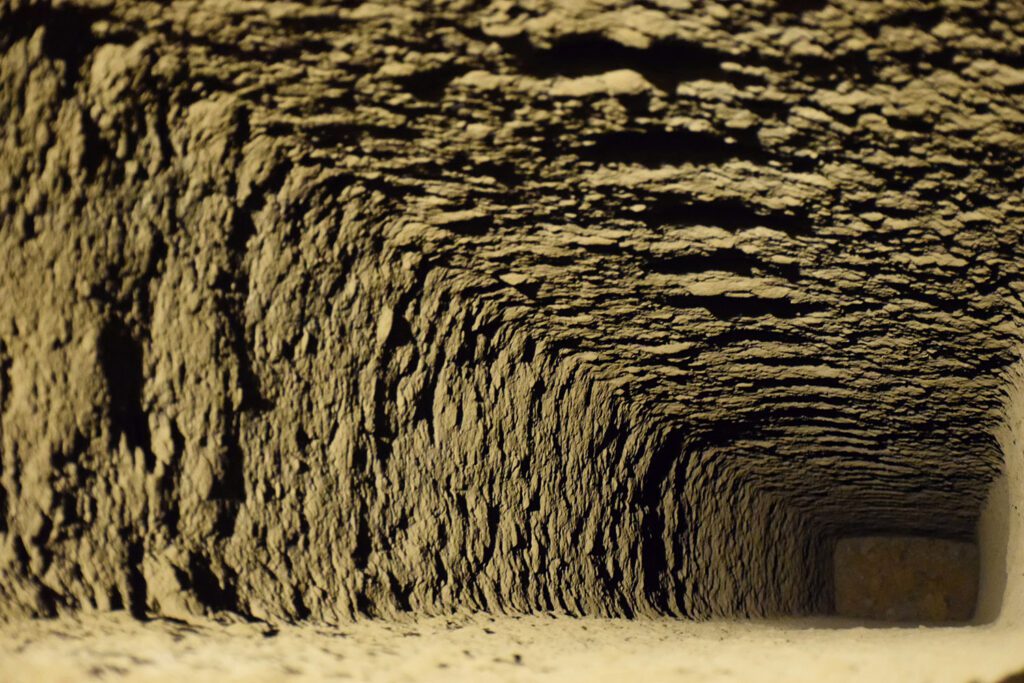
Adriano's Maze / Labirinto di Adriano
Adriano's Maze, discovered by chance during the flooring works at a pastry shop here above, is another underground complex. It was named after its general shape, that is quite like a maze, while Adriano was the name of its first restorer. Along the route you can see a fossilized tree trunk, some silos, some wells, and the Medieval and Renaissance dumps.
A very special travel not only in history, but also in the earth. Inside this suggestive place, it is even possible to taste typical Orvieto dishes at the restaurant. The archaeological visit is free for customers.
INFORMAZIONI
Località
Via Volsinia, 05018 Orvieto TR
Orari
Orario estivo (ora legale): 10:00 – 19:00
Orario invernale (ora solare) : 9:00 – 18:00
Lunedi, Martedi, 3a e 4a domenica del mese: chiuso
Biglietto
Ingresso a pagamento: Euro 3,00
Contatti
Email: info@genesiagency.it
